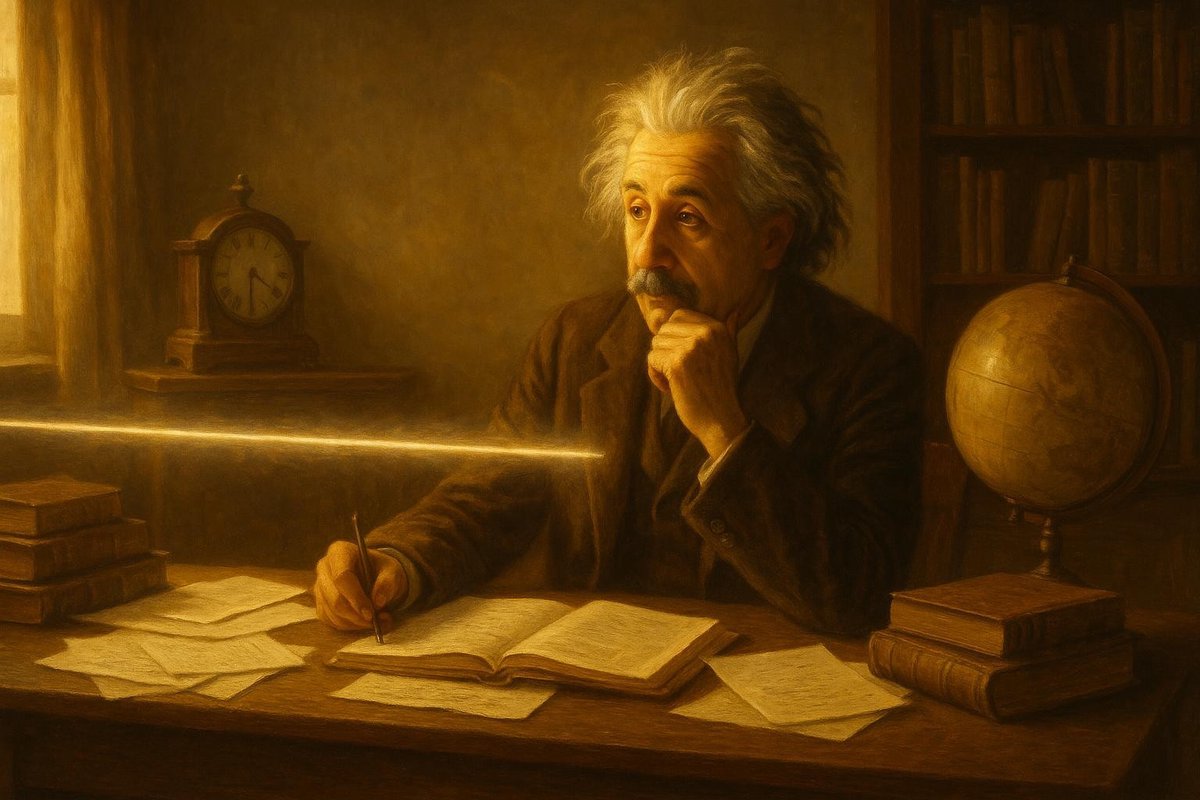
The Origin of Einstein’s Quest
Imagine being a young Albert Einstein, gazing at a beam of light and wondering: What if I could ride alongside it? In the late 19th century, this question was not just fanciful—it was revolutionary. At the time, many believed space and time were fixed, unchanging arenas where events simply played out. But curiosity urged Einstein to ask: Could there be more? Despite the limitations of his day, where the classical physics of Newton reigned supreme, Einstein’s imagination dared to venture beyond.
- Einstein was born in 1879 in Ulm, Germany, a time when the classical physics of Newton dominated scientific understanding.
- From a young age, he was fascinated by light, often wondering about its nature and speed.
- His early curiosity laid the groundwork for later breakthroughs in physics.
Einstein’s natural inclination towards deep thinking and questioning led him to develop thought experiments. These imaginary scenarios became the laboratory of his mind, without the need for physical experiments. Interestingly, it was through these mental journeys that he began to challenge existing notions of reality.
Key Figures in the Revolution
Of course, Einstein wasn’t alone on his intellectual journey. He was inspired by the work of many great thinkers who came before him. James Clerk Maxwell, for instance, described electromagnetic waves, providing insights that light was an electromagnetic wave itself. This set the stage for Einstein’s later breakthroughs. Additionally, Henri Poincaré’s thoughts on the relativity of motion further stirred Einstein’s mind.
- Maxwell’s equations in the 1860s demonstrated that light was an electromagnetic wave, setting the foundation for Einstein’s explorations.
- Henri Poincaré published works on the relativity of motion in the early 1900s, influencing Einstein’s ideas.
- These thinkers provided the necessary groundwork for Einstein to leap forward with his concepts.
No wonder Einstein was surrounded by such a rich tapestry of ideas. These intellectual giants provided the shoulders upon which he stood. As time went on, Einstein’s focus sharpened on understanding the relationship between time, space, and light, preparing him to disrupt the scientific status quo.
The Turning Point: A New Perspective on Space-Time
In 1905, known as Einstein’s Annus Mirabilis (Miracle Year), he published four groundbreaking papers. Among them, the paper on Special Relativity introduced a radical idea: time and space are not absolute. Instead, they are interwoven into a single continuum—space-time. This revelation stemmed from his thought experiments, particularly the conclusion that the speed of light is constant, regardless of the observer’s relative motion.
- In his Special Relativity paper, Einstein proposed that time and space are relative to the observer’s state of motion.
- This was contrary to the prevailing Newtonian view of a constant, unchanging space and time.
- His insights derived from pondering what happens if you travel at the speed of light.
It’s fascinating how a simple question about riding a light beam could lead to such profound implications. With time now seen as flexible rather than rigid, Einstein’s work fundamentally shifted our understanding of the universe.
Impact on the World: Beyond Physics
Einstein’s theory of relativity didn’t just change physics; it altered our worldview. The implications reached far beyond academic circles. In the years following, technologies like GPS, which rely on precise time measurement, became possible thanks to understanding relativity. On a cultural level, Einstein became an icon, his name synonymous with genius.
- Relativity has practical applications in GPS technology, ensuring accuracy by accounting for time dilation effects.
- Einstein’s work encouraged a new era of scientific exploration, inspiring countless physicists worldwide.
- His fame transcended science, becoming a cultural symbol of intellectual achievement.
Reflecting on Einstein’s legacy, one can see his theories continuing to influence modern physics and technology. The quest to understand space-time is ongoing, with researchers building on his groundwork in fields like quantum mechanics and cosmology.
Fuel Someone Else’s Curiosity
Einstein once said, “Imagination is more important than knowledge.” Why not let your imagination soar and share this journey with others? Discuss it over coffee, or share this article with a friend. The universe is vast, and there’s always more to explore. Together, let’s keep the spirit of discovery alive!

Leave a Reply